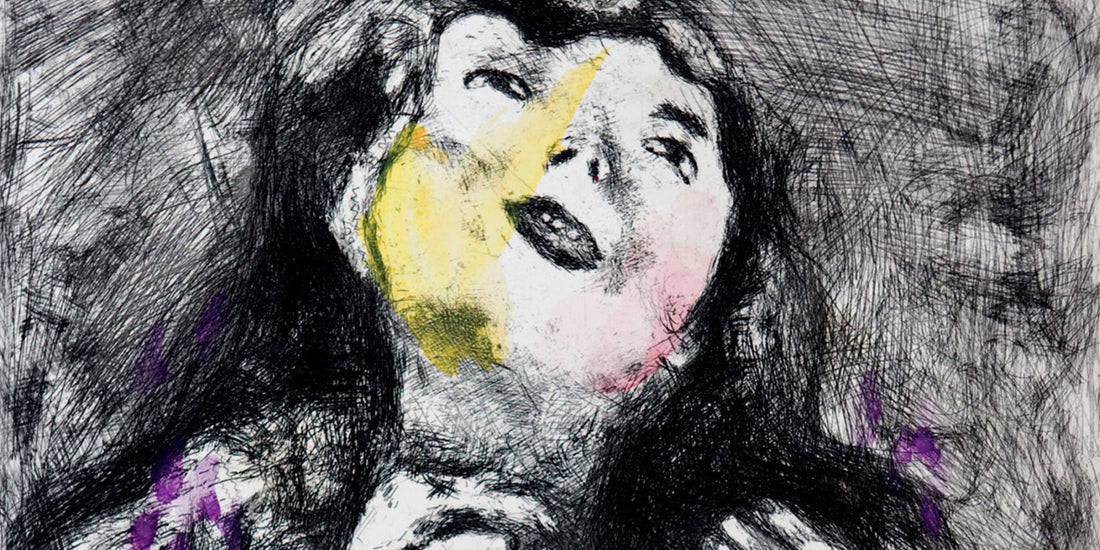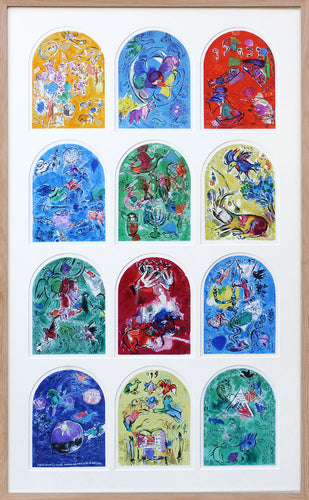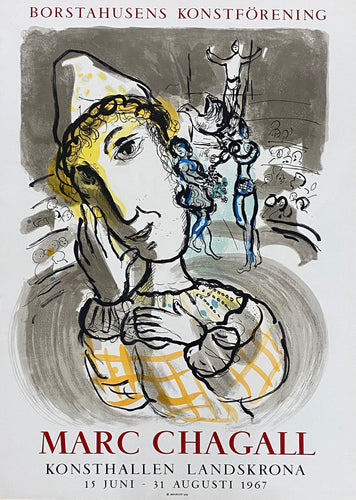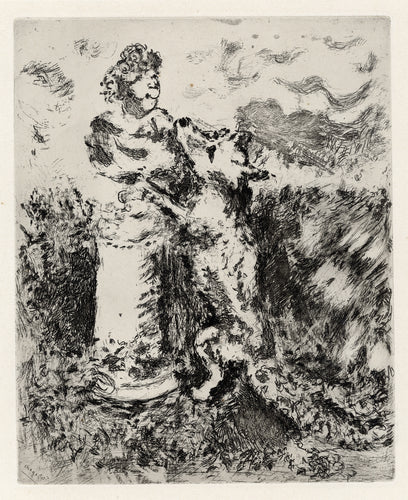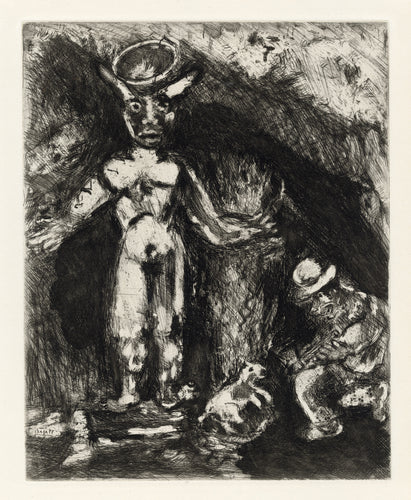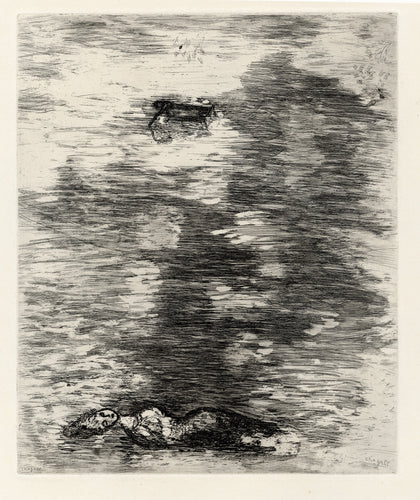Enchantingly poetic, Marc Chagall's Fables are among the very best illustrations of La Fontaine's moral tales.
Published in 1952, the naive imagery and extraordinary breadth of tones achieved in each etching convey the simple power of La Fontaine's text, a mixture of cautionary allegories from the ancient Greek fabulist Aesop and La Fontaine's own invented fables.
 'extraordinary breath of tones...' - 'The Two Mules'
'extraordinary breath of tones...' - 'The Two Mules'
By the late 1920s, Ambroise Vollard – dealer, collector, publisher and defender of French avant-garde artists – had become one of the most famous figures in the contemporary art world. Having published, marketed or publically supported the likes of Picasso, Matisse, Gauguin and Van Gogh, artists whose innovative works pushed against the conservative cultural values of their time, Vollard's opinion was deemed both important and controversial by French arbiters of taste.
 (above) Chagall's delicate hand-colouring; (below) 'The Miser who had Lost his Treasure' (left) and 'The Wolf, the Mother and her Child' (right)
(above) Chagall's delicate hand-colouring; (below) 'The Miser who had Lost his Treasure' (left) and 'The Wolf, the Mother and her Child' (right)

Vollard commissioned Chagall's etchings to accompany La Fontaine’s Fables after meeting the young artist for the first time at his studio on the Avenue d’Orléans in 1923. Vollard's first commission - illustrations for Gogol's Dead Souls established a close working relationship between the pair which would last until his sudden death in a car accident before the start of World War II. Work on the Fables began just a few years after their first acquaintance, though it would be decades before they were released to the public.
 'sound and delicate, realistic and fantastic...' - 'The Two Bulls and the Frog'
'sound and delicate, realistic and fantastic...' - 'The Two Bulls and the Frog'
Chagall – being both a ‘romantic’ and a Jew – was deemed by conservative critics an inappropriate choice to illustrate this comparatively ‘classical’ work, Vollard’s personal endorsement coming under intense fire from staunch traditionalists in an ongoing debate that ended up in the Chamber of Deputies.
When asked by the clamouring chamber Why Chagall?, Vollard’s response was short and direct: Simply because his aesthetic seems to me in a certain sense akin to La Fontaine’s, at once sound and delicate, realistic and fantastic.
 (above) 'The Fox and the Goat'; (below) 'The Ass Dressed in the Lion's Skin' (left) and 'The Old Lady and the Two Servants' (right)
(above) 'The Fox and the Goat'; (below) 'The Ass Dressed in the Lion's Skin' (left) and 'The Old Lady and the Two Servants' (right)

Chagall began by painting preparatory gouaches which were to be translated to the etching plates for printing. Upon realising that even the master printers charged with the task could not match the gradations of tone he desired, Chagall elected to prepare the etchings himself, using a drypoint technique to work his designs directly into the metal plates.
 Chagall's distinctive etching lines - 'The Lion and the Hunter'
Chagall's distinctive etching lines - 'The Lion and the Hunter'
Work continued on the etchings from 1928-31, more than twenty years before they were issued. Vollard was often difficult to work with, juggling multiple projects with other artists at once, and through correspondences with friends Chagall betrayed his frustration with the delay in publication: I finished the books, Dead Souls and La Fontaine long ago, but Vollard, of course, procrastinates; such is his nature… He’s very difficult, Vollard. But nevertheless I hope.
 'cruelty and melancholy...ease and joy' - 'The Wolf and the Lamb'
'cruelty and melancholy...ease and joy' - 'The Wolf and the Lamb'
The variety of images in the illustrations for the Fables is astonishing, as is the range of tones brought out by Chagall’s thickly bitten lines. Throughout the suite, scenes rarely share direct parallels with the text, Chagall instead choosing to try and capture the essence of each moral tale, with an emotional range that reveals the cruelty and the melancholy as much as the ease and the joy of La Fontaine’s stories: in one plate, a dark wolf holds the limp body of a reddened lamb in its mouth; in another, a farmer treads a path through the corn beneath the glorious yellow orb of a sun.
 (above) 'The Sick Stag'; (below) 'The Two Parrots, the King and his Son' (left) and 'Death and the Woodsman' (right)
(above) 'The Sick Stag'; (below) 'The Two Parrots, the King and his Son' (left) and 'Death and the Woodsman' (right)

Widely regarded as one of the great print suites of the 20th century, Chagall's Fables etchings were finally published in 1952 in an edition of just 200, with 85 special sets which were hand-painted by Chagall himself (pictured above). An enduring series which embodies the humanity and the humility that is so typical of his work, the Fables remain one of Chagall’s – and indeed Vollard’s – most treasured endeavours.
